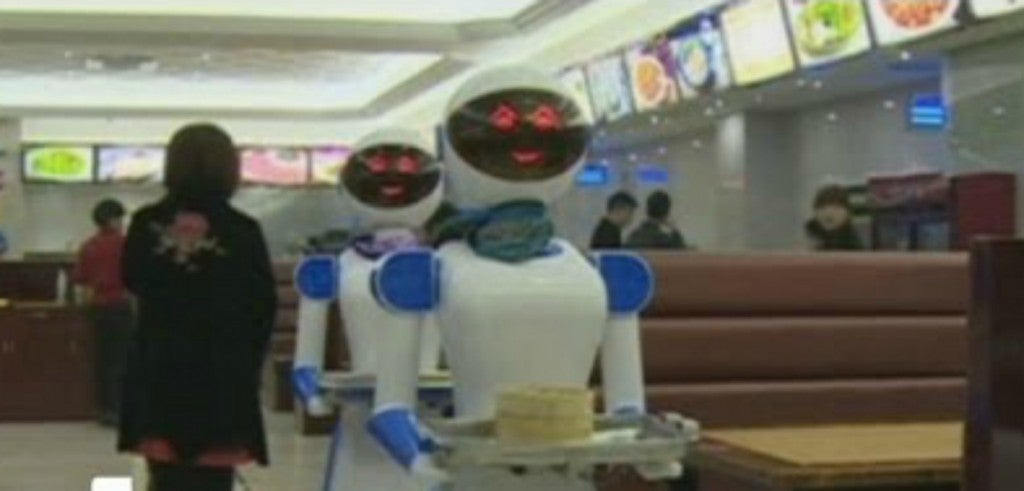Next time you go out to eat, a new kind of waiter might serve you.
One restaurant owner in China has replaced his traditional wait staff with robots.
According to Fox News, the robots are able to take customer orders and communicate with them using “a 40 phrase Mandarin Chinese vocabulary.”
Fox reports that “each machine travels through the small eatery using an optical sensing system that is designed that keeps them from running into walls or people.”
Some of the robots can even dance Gangnam Style.
The restaurant, located in a shopping mall in the city of Ningbo, has become a tourist attraction for visitors who want to experience the “futuristic wait staff,” according to Fox.
Despite the $9,400 price tag for each robot, owner Lu Dike is confident that he will ultimately save money.
“As time goes by, our lives will become more and more high-tech,” said Dike through a translator. “Catering has to have a breakthrough…. I want customers to know robots can enter into the catering industry.”
James Sherk, the senior policy aalyst in Labor Economics at the Heritage Foundation said that many restaurants are contemplating “restructuring dramatically in order to use less labor:”
Fast-food restaurants could reduce labor costs by (a) substituting entry-level workers for more skilled and more productive workers and (b) replacing human workers with machines. Fast-food jobs involve many routine tasks that are particularly susceptible to automation. For example, McDonald’s recently announced plans to adopt iPhone ordering and paying—making the jobs of many cashiers redundant. Inventors in California have created an automatic hamburger-cooking machine that cooks 360 hamburgers in an hour without human intervention. Artificially increasing fast-food wages would significantly hasten the adoption of such technology—flat out eliminating many positions in the fast-food industry.
